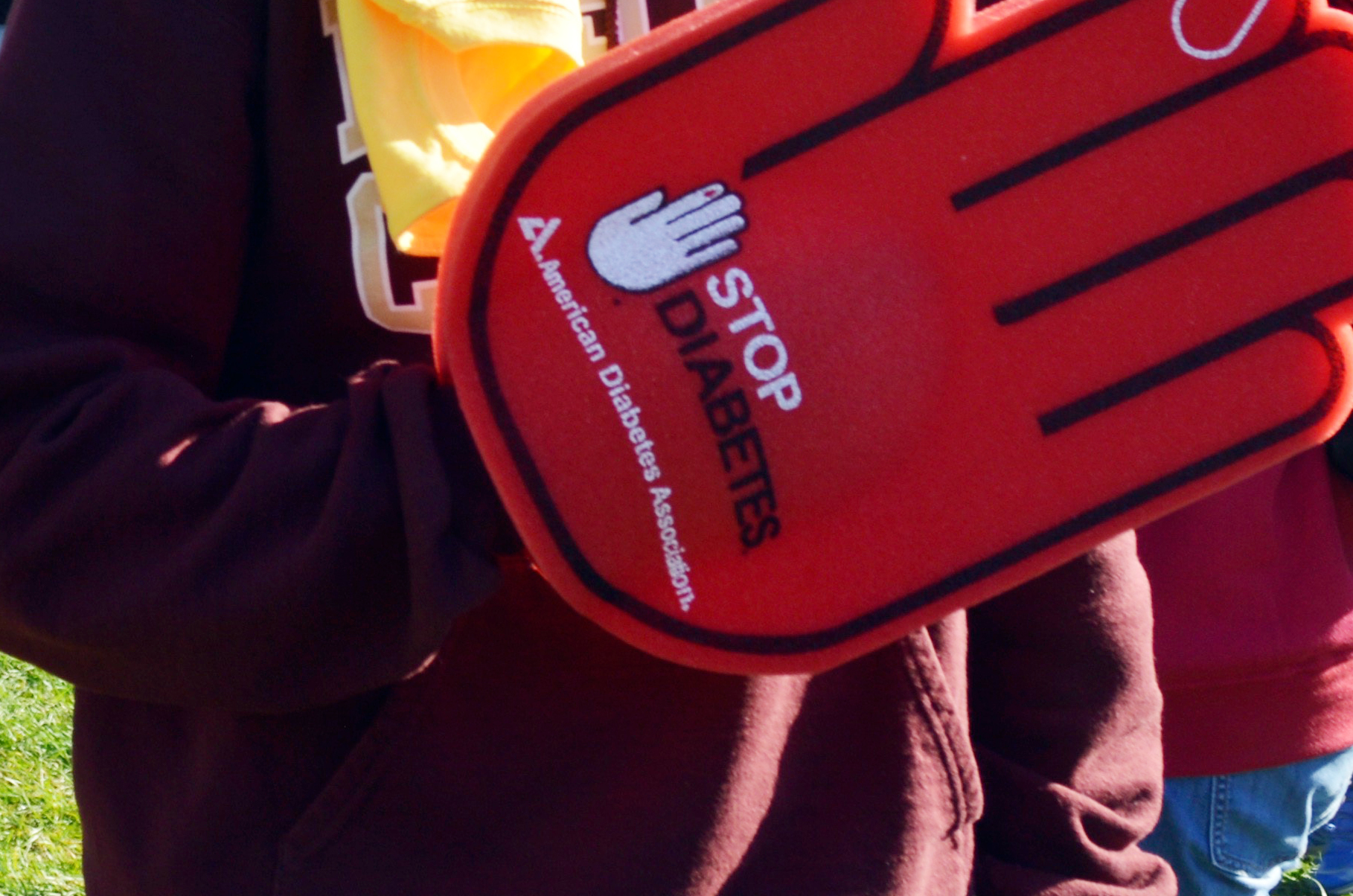Photos by Carolyn Komatsoulis
On Saturday, 3,000 walkers and 300 volunteers gathered in the Boston Common for the 25th anniversary of the “Step Out Walk to Stop Diabetes”, the signature fundraising event for the American Diabetes Association (ADA).
According to the ADA, 29.1 million Americans, 9.3 percent of the population have diabetes while 86 million have pre-diabetes.
Hear what walkers and volunteers have to say about their inspirations by clicking on the red button on each photo below.
One of 95 Step Out Walks across the US, the Boston Step Out aims to bring the community together to celebrate the lives of people who manage Type I, Type II, and gestational diabetes. Along with fundraising, the goal is also to educate people and support the mission to prevent and cure the disease.
A first-time walker, Richard Crowley from Walpole lives with diabetes after being diagnosed a year ago. He said he finds living with diabetes more complicated, but tries to take the challenge with stride.
“[The walk] means a lot to me,” he said. “It’s raising money for diabetes to help find a cure to help me.”
According to Shawn Martin, Manager of Development of the ADA, the money raised goes directly towards the ADA’s mission, “to prevent and cure diabetes and to improve the lives of all people affected by diabetes.”
Martin said the funds are evenly divided between four major investment areas: research, health care excellence, advocacy, and total wellness. She said the association works to improve the quality of life for people with diabetes through community-based outreach, digital and printed information, and lifestyle programs and services. In addition, 80 percent of the funds raised for the walk comes from individual fundraising and those who participate in the walk. About 20 percent of the funds are raised through corporate partnerships.
Martin added that participation has steadily increased over the years. The Walk has grown from 1,000 to 5,000 attendees in recent years. Some of these attendees are college students who feel that diabetes has affected their personal and college experiences.
A Boston University student, Lul Mohanud (CAS ’19), who is a member of the Islamic Society, has two aunts and an uncle with Type II diabetes. She said she has also met students at BU with Type I and Type II diabetes. She said she believes it is important to acknowledge that diabetes is a problem and affecting young people. Mohanud also emphasized that sometimes schools don’t look at diabetes as something that hinders student’s education and how they function in college.
“It is really important for people to know that there is no cure yet, and it’s possibly achievable if we come together, give money so we can do some research to find a cure.” Mohanud said.
Brittany Foley, a senior at Northeastern University, said, “having diabetes affected my college experience in more ways than I initially expected.”
She said she anticipated occasionally missing class if her sugar levels got out of control. She said it did not occur to her that she would not be able to go out with her friends some weekend nights, or that even when she did, she wouldn’t be able to “keep up.” She spent a lot of time freshman year in the dorms by herself while her classmates and floor mates party-hopped with the many new friends they made each weekend. She said was called stuck up and a “goody-two-shoes.” The first year, she had trouble finding friends and felt like she was an outcast, which affected her as a student. Foley’s mood changed drastically. She didn’t want to go to class or do anything.
“Hills and valleys, that’s what diabetes is. Ups and downs, highs and lows. It got better, I got better, and school got a lot better,” Foley said.
Dealing with those ups and downs can be challenging but couples such as Robert and Erin Sharp inspire and provide support for each other to show strength. Robert has Type I diabetes, and Erin said she signed the couple up for the walk because she was really into finding a cure.
Robert said, for him, it’s all about the community.
“Being around other people who have diabetes, and seeing the effort people put in to try to find a cure is really inspiring, and so I want to be a part of that.”








